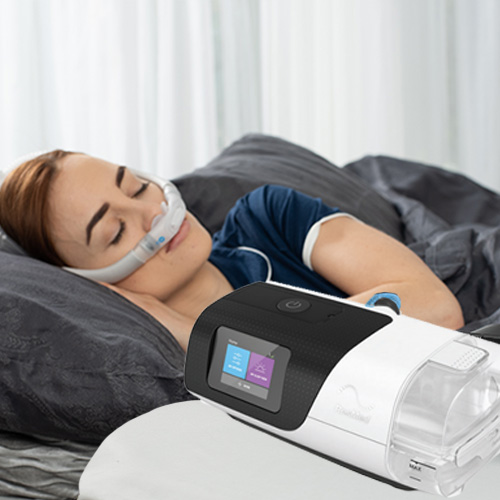

Air pollution is an increasing concern, especially for those managing sleep apnea. As a CPAP user, it’s essential to understand how air quality might be affecting your therapy and what you can do to mitigate the impact. This blog will explore how pollution may affect your CPAP therapy and practical steps you can take to protect your health.
The Connection Between Air Pollution and Sleep Apnea
Studies have shown that exposure to air pollution, particularly particulate matter (PM2.5) and nitrogen dioxide (NO2), can worsen sleep apnea symptoms.¹ These tiny particles are small enough to infiltrate your airways, potentially increasing airway resistance and inflammation.² For those with sleep apnea, this can exacerbate breathing issues, undermining the effectiveness of CPAP therapy.
CPAP therapy requires a continuous supply of clean air, and when pollution levels are high, this may mean that the air you breathe while using your machine is compromised. Particles and pollutants can infiltrate your system, making it more difficult to maintain effective CPAP therapy.
Protecting Your CPAP Therapy from Air Pollution
1. Upgrade Your CPAP


If you live in an area with high pollution levels, consider upgrading to a CPAP machine with advanced filtration features. The ResMed AirSense 11, for example, offers improved air filtration, ensuring that the air you breathe while using CPAP is cleaner and safer, even in polluted environments. It features:
- SmartStart: Starts automatically at a low pressure as soon as you put on your mask
- AutoRamp: Starts your therapy at a low pressure, and then ramps it up once you’re asleep
- EPR (expiratory pressure relief): The pressure is reduced as you exhale to make breathing easy
- SmartStart: Starts automatically at a low pressure as soon as you put on your mask
- AutoRamp: Starts your therapy at a low pressure, and then ramps it up once you’re asleep
- EPR (expiratory pressure relief): The pressure is reduced as you exhale to make breathing easy
Get your new AirSense 11 for just $399 down! Just add to cart below.
Your CPAP supplies could be yours for $0! Allow us to check with your insurance provider for you to find out what is covered (for free!). Click below to get started:
2. Boost Your CPAP’s Filtration


One of the most effective ways to combat air pollution while using your CPAP is by using high-quality filters. For instance, the ResMed Hypoallergenic CPAP Filters are designed to block out small particles, offering an additional layer of protection against pollutants. These filters can help prevent harmful particles from entering your CPAP machine and, ultimately, your lungs.
Inline filters add another layer of filtration, attaching directly to your CPAP tubing. They’re especially beneficial if you live in an area with poor air quality. Adding an inline filter can further reduce the number of harmful particles entering your CPAP.
3. Routine Maintenance


Maintaining clean CPAP equipment is essential, particularly when air quality is compromised. Regularly clean and replace your CPAP filters, masks, and tubing to ensure they remain effective in filtering out pollutants. A device like the Lumin can simplify your cleaning routine by sanitizing your CPAP components without water or harsh chemicals. It features:
- Simple and Quick: Lumin kills 99% of bacteria in a one-touch 5 minute cycle
- UV Technology: specialized UV-C light source targets harmful bacteria, viruses, mold, and fungus
- Complete compatibility: No adapter needed
- Simple and Quick: Lumin kills 99% of bacteria in a one-touch 5 minute cycle
- UV Technology: specialized UV-C light source is targeted to kill harmful bacteria, viruses, mold, and fungus
- Complete compatibility: Lumin fits all major mask types and humidifier chambers
Save $70 when you buy the Lumin today! Just add to cart below with code LUMIN70 applied automatically.
4. Air Purifier


Using an air purifier in your bedroom can significantly improve air quality, especially while using CPAP therapy. To maximize effectiveness, place the purifier near your bed and set it to a higher setting during peak pollution hours. Ensure the purifier has a HEPA filter, which can capture fine particulate matter. Air purifiers like the PuroAir are designed to:
- Filter up to 99% of smoke, pollen, dust and odors
- Automatically adjust based on air quality
- Promote better sleep by reducing respiratory discomfort
- Filter up to 99% of smoke, pollen, dust and odors
- Automatically adjust based on air quality
- Promote better sleep by reducing respiratory discomfort
Sources:
- “Understanding the Link between Sleep Apnea and Air Pollution.” MSN. Accessed 6 Sept. 2024.
- Billings, Martha E et al. “The Association of Ambient Air Pollution with Sleep Apnea: The Multi-Ethnic Study of Atherosclerosis.” Annals of the American Thoracic Society vol. 16,3 (2019): 363-370. doi:10.1513/AnnalsATS.201804-248OC










